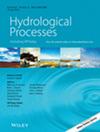Improving Monthly Streamflow Prediction by Deep Learning Model With Physics-Based Rules
Abstract
Prediction of monthly streamflow is of great importance for water resources management and reservoir operation. Deep learning has evolved into a budding tool for making hydrological predictions and has achieved promising progress in hydro-science. However, the lack of physical mechanisms in deep learning restricts its operational applications and limits its extrapolation to unobserved processes. To address this issue, this study developed a hybrid model imparting hydrological knowledge to DL (named P-DNN) for streamflow forecasting. Specifically, P-DNN combines the understanding of processes imbued in the conceptual hydrological model with the predictive abilities of state-of-the-art DL models by designing a special architecture containing several modules to simulate the rainfall-runoff hydrological processes. Also, to reinforce the physical import of DL models, mass conservation is incorporated into the loss function in P-DNN to penalise the violations of water balance. The illustrative cases of streamflow prediction in both upper and middle reaches of the Yangtze River basin demonstrate that the integration of scientific knowledge into the deep learning model has enhanced prediction accuracy and intelligence for inferring unobserved processes. Overall, this study suggests that the hybrid model shows promise for improving forecasting of many important hydrological variables and potential to improve the DL awareness of hydrological understanding.


 求助内容:
求助内容: 应助结果提醒方式:
应助结果提醒方式:


